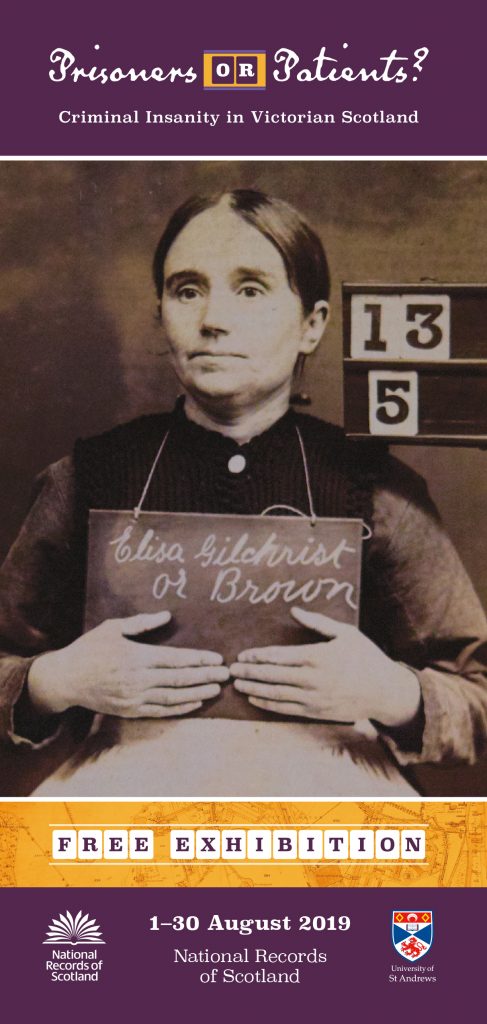7 August 2019, 1.30 – 2.30pm, New Register House
Prisoners or Patients? Criminal Insanity in Victorian Scotland
Professor Rab Houston, University of St Andrews
As part of National Records of Scotland’s (NRS) free Edinburgh Fringe exhibition, guest curator Professor Rab Houston of the University of St. Andrews, will examine the ‘criminal lunatics’ featured – those who had ‘committed grave and heinous crimes dangerous to the public’ – and how the exhibition has been informed by his wider project ‘Promoting mental health through the lessons of history’.
The talk outlines who the criminal lunatics were, how they ended up as ‘prisoner-patients’ in what until 1948 was the only specialist facility in Scotland, and what chances these violent yet vulnerable people had of release and rehabilitation. As well as examining patterns of behaviour and the legal/medical structures of the time, it will explore the lived experiences of individual prisoner-patients and those they encountered.
![]()
Professor Houston’s talk is now available online.
Exhibition 1st – 30th August 2019

Prisons have a much higher proportion of men and women with mental disorders than the general population. This was also true in Victorian times, when ‘the liability of the criminal classes to an excess of insanity is very great, and much beyond that of the free population of the country’. The Prisons (Scotland) Act (1844) defined ‘criminal lunatics’ as ‘insane persons charged with serious offences’. From 1846 Perth Prison provided specialist housing for those not responsible on account of their insanity and in 1865 established a separate Criminal Lunatic Department (CLD). The then resident surgeon J. Bruce Thomson called inmates ‘prisoner-patients’ or ‘state lunatics’, ‘inasmuch as, having committed grave and heinous crimes dangerous to the public, they are placed at Her Majesty’s disposal, under the care of the State.’ Criminal lunatics became part of an integrated system during Victorian times, rather than anomalies in both justice and health care.
Predating Broadmoor, England (1863) and Dundrum, Ireland (1850), Perth was the only such facility in Scotland until The State Institution for Mental Defectives (now The State Hospital) opened at Carstairs, Lanarkshire in 1948.
The exhibition looks at the difficult lives of 9 offenders admitted between 1857 and 1887 before, during, and after their crime and their lapse into insanity. Its aim is to raise awareness of mental disorders inside and outside prisons because, regardless of circumstances, anyone’s life can be tragically affected by them. Highlighting the treatment of prisoner-patients in a society with very different medical science, laws, social welfare systems, and conceptions of the rights of individuals and communities from those of today allows us to reflect on the same issues now, and approach those suffering from mental disorders with better understanding and greater compassion.
![]()
Professor Houston’s talk is now available online.

